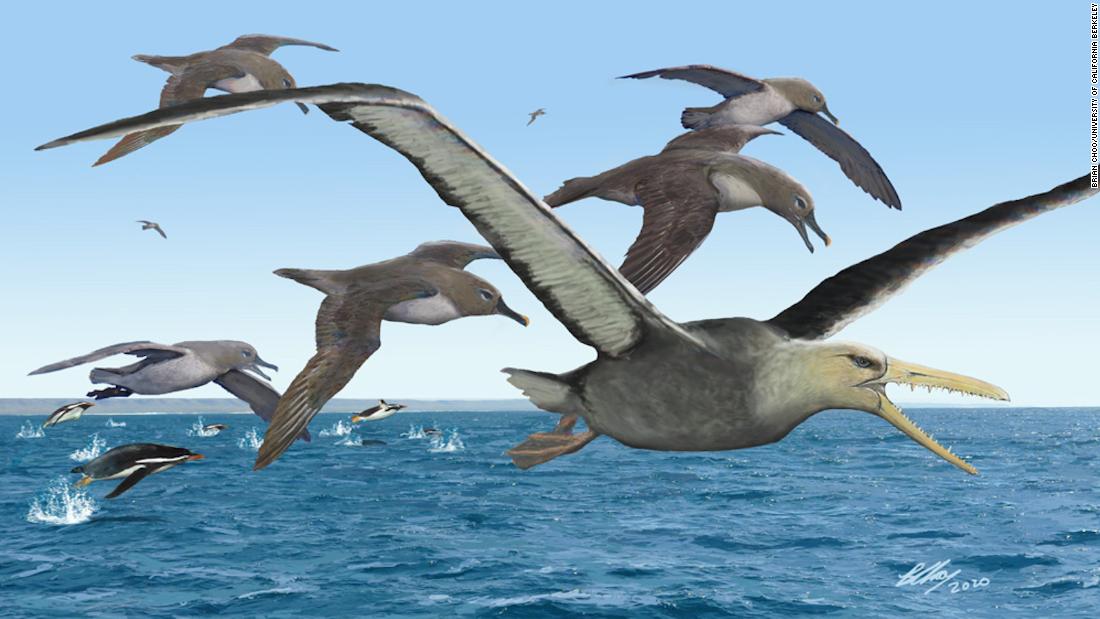
Kloess and other researchers determined that the foot bone dates back 50 million years, and the jaw bone is around 40 million years old -- evidence that the birds emerged in the Cenozoic Era, after an asteroid struck Earth and wiped out nearly all dinosaurs.
"Our fossil discovery, with its estimate of a 5-to-6-meter wingspan -- nearly 20 feet -- shows that birds evolved to a truly gigantic size relatively quickly after the extinction of the dinosaurs and ruled over the oceans for millions of years," Kloess said in a news release by the university.
"The extreme, giant size of these extinct birds is unsurpassed in ocean habitats," added study co-author Ashley Poust of the San Diego Natural History Museum.
Like albatrosses, the pelagornithids traveled widely over the world, and could have flown for weeks at a time over the sea.
At the time, oceans had yet to be dominated by whales and seals -- meaning easy prey for the giant birds.
"The big (pelagornithids) are nearly twice the size of albatrosses, and these bony-toothed birds would have been formidable predators that evolved to be at the top of their ecosystem," said study co-author Thomas Stidham of the Chinese Academy of Sciences in Beijing.
The study also painted a portrait of what Antarctica might have looked like 50 million years ago.
